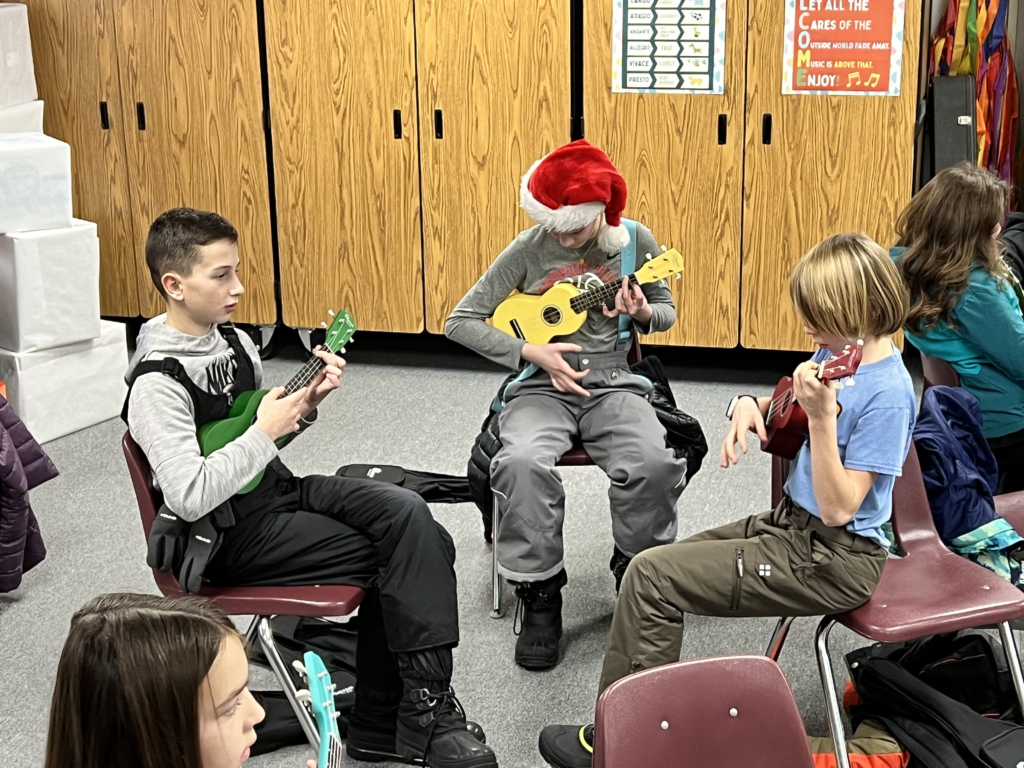Did you play a musical instrument in your childhood? You may or may not realize the impact it had on your life. Many don’t.
Schools with music programs have an estimated 90% graduation rate and 94% attendance rate compared to schools without music education, which average 73% graduation and 85% attendance. (Source)
Music education is greatly underrated by many, including our legislators but not by teachers and parents. Eighty-nine percent of teachers and 82 percent of parents rate music as a source for greater student creativity, which by the way, is a critical skill in today’s competitive global economy. (Source)
This is where PAFE comes in and, the continual dedication of our educators like Washington Elementary School music teacher Sigi Ribeiro who requested grant funds for 30 ukuleles so students can experience playing a stringed instrument, strumming techniques, chord chart reading, note and rhythm reading, steady beat, finger dexterity and coordination, and solo and group performances.
Here’s how it works:
Through the use of an affordable teaching resource, Ukulele Karate, students learn the history as well as the anatomy of the instrument. In total, there are 25 tunes they can learn and it progresses in difficulty from white belt to yellow and up to black belt. Each time they graduate to the next level they receive a colored belt made of yarn which they can tie to their backpack.
We visited the classroom this winter and here’s what it looks like in action:
By the end of the unit (three months or longer if the interest is there), students would have learned enough to have mastered at least four songs if not more. Mastery means they know the finger placement for one chord and two different strumming patterns and are able to strum and sing simultaneously. For an extra challenge, they can choose to practice in small groups and perform more challenging songs on performance day. On concert day, each will have the opportunity to get on the stage for friends and family with the small group leaders presenting to the audience what they know about the instrument.
Many students don’t have the opportunity to play a musical instrument and we are glad to be able to facilitate this. Put the data and the science aside and playing music provides a creative outlet and a way for students to relax and decompress.
Programs like this one along with our strategic initiatives and early childhood literacy programs are making a difference for our school district and our community. To get involved, learn more here.
